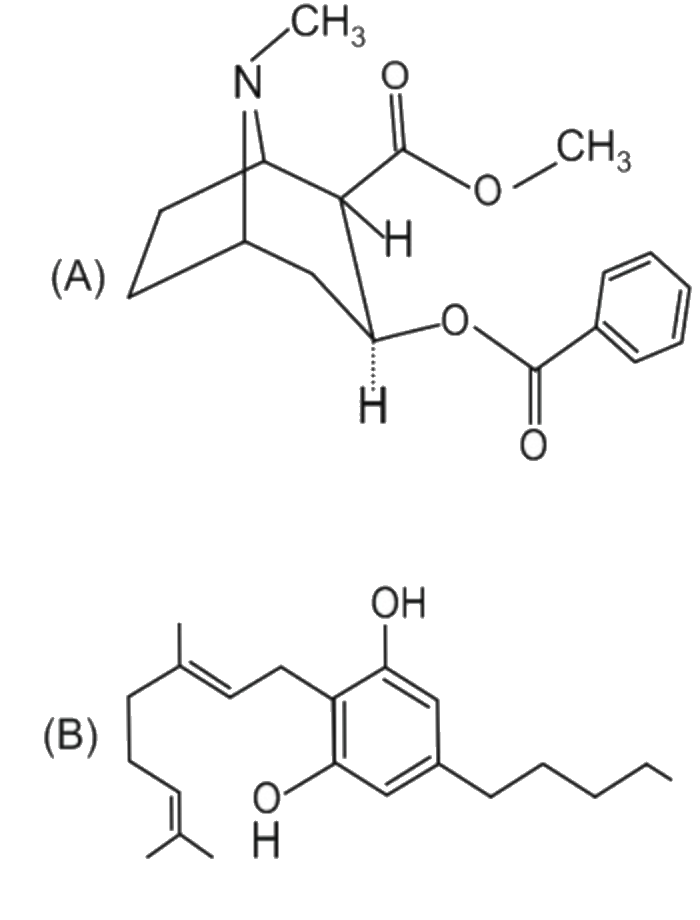Sedatives and tranquillisers are also called
(a) Stimulants
(b) Depressants
(c) Hallucinogens
(d) Pain killers
Stimulants
Depressants
Hallucinogens
Pain killers
The correct Answer is:B
Step-by-Step Solution:
1. Understanding Sedatives and Tranquillisers: Begin by recognizing what sedatives and tranquillisers are. They are substances that have a calming effect on the body and are often used to treat anxiety and tension.
2. Function of Sedatives and Tranquillisers: These substances act as depressants of the central nervous system (CNS). This means they slow down brain activity and reduce excitement and pain.
3. Effects on the Body: Sedatives and tranquillisers lead to drowsiness or sleepiness. They lower the function of various body parts, contributing to their calming effect.
4. Differentiating from Other Categories:
- Stimulants: These are substances that increase brain activity and excitement, which is the opposite of what sedatives and tranquillisers do.
- Hallucinogens: These substances cause hallucinations and altered perceptions, which is not a characteristic of sedatives and tranquillisers.
- Pain Killers: While sedatives may reduce pain, they do not relieve it in the same way that pain killers do.
5. Conclusion: Based on the above points, sedatives and tranquillisers are classified as depressants because they depress the CNS and induce calmness.
Final Answer: (b) Depressants
---
- Stimulants: These are substances that increase brain activity and excitement, which is the opposite of what sedatives and tranquillisers do.
- Hallucinogens: These substances cause hallucinations and altered perceptions, which is not a characteristic of sedatives and tranquillisers.
- Pain Killers: While sedatives may reduce pain, they do not relieve it in the same way that pain killers do.
Topper's Solved these Questions
Similar Questions
Knowledge Check
(a) (i) decreases, (ii) CO, CO2, (iii) brain, (iv) hallucinogen, depressant, (v) latex
(b) (i) increases, (ii) CO, haembound oxygen, (iii) brain, (iv) sedative, painkiller, (v) latex
(c) (i) decreases, (ii) CO, haembound oxygen, (iii) brain, (iv) sedative, painkiller, (v) latex
(d) (i) increases, (ii) CO, haembound oxygen, (iii) heart, (iv) sedative, painkiller, (v) resinA(i) decreases, (ii) CO, CO2, (iii) brain, (iv) hallucinogen, depressant, (v) latexB(i) increases, (ii) CO, haembound oxygen, (iii) brain, (iv) sedative, painkiller, (v) latexC(i) decreases, (ii) C), haembound oxygen, (iii) brain, (iv) sedative, painkiller, (v) latexD(i) increases, (ii) CO, haembound oxygen, (iii) heart, (iv) sedative, painkiller, (v) resin
Vitamin C is also called :
View SolutionSaprophytic angiosperms are also called
(a) Mycorrhizal plants
(b) Mesophytic plants
(c) Humus plants
(d) Myrmecophilous plants
View SolutionMean is also known as (a) median (b) average (c) range (d) frequency
View SolutionHaemodialysis is also called artificial
(a) Liver
(b) Lungs
(c) Heart
(d) Kidneys
View SolutionThe lateral petals of vexillary corolla are called
(a) Vexilla
(b) Alae
(c) Carina
(d) Both b and c
View SolutionHypotensive tranquilliser drug reserpine is obtained from roots of
(a) Ferula asafoetida
(b) Rauwolfia serpentina
(c) Papaver somniferum
(d) Curcuma longa
View SolutionIdentify the molecules (A) and (B) shown below and select the right option giving their source and use.

(a) Cocaine, Erythroxylum coca, Accelerates the transport of dopamine
(b) Heroin, Cannabis sativa, Depressant and slows down body functions
(c) Cannabinoid, Atropa belladona, Produces hallucinations
(d) Morphine, Papaver somniferum, Sedative and pain killer
View Solution
